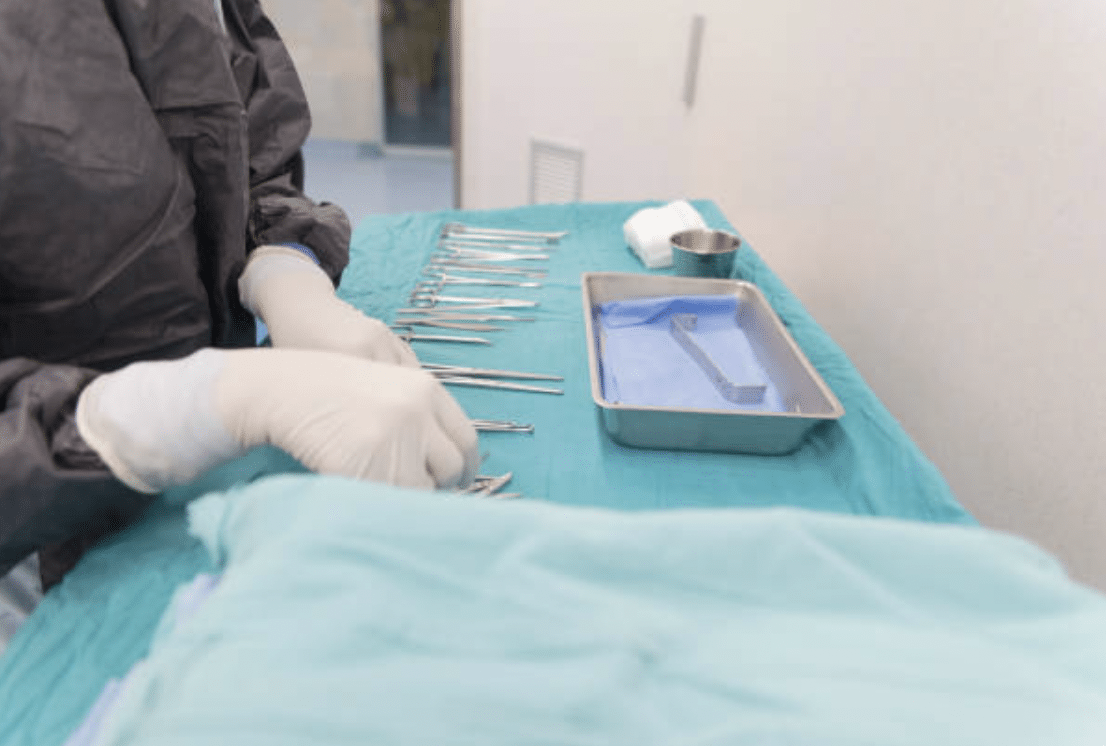
An aneurysm is a localized, balloon-like expansion in a blood vessel caused by weak vessel walls. In most cases, aneurysms cause no symptoms and are often found while patients are being treated for another medical condition. However, there are cases where an aneurysm may elicit a sudden, severe pain. As the aneurysm enlarges, the chance it will rupture increases; complications from the sudden breaking of an aneurysm are considered a medical emergency and can lead to sudden death.
Types And Causes Of An Aneurysm
There are several traits of an aneurysm to observe and consider when approaching surgical treatment.

First, the aneurysm may be true or false.
A true aneurysm results in the characteristic bulge of inner circulatory tissue being exposed through the outer tissue.
A false aneurysm is actually a slow leak in the vessel wall that pools up just beside the artery due to the surrounding tissue tightly encapsulating it.
The location of an aneurysm is also important. Most non-cranial aneurysms are located on the aorta, the main artery leaving the heart. Major blood vessels may be affected by an aneurysm.
What are the risk factors for developing an aortic aneurysm?
A ruptured aortic aneurysm is an emergency. Early on, most aneurysms aren’t easily detected. So, it’s a good idea to know what risk factors increase your odds of developing one. These are the risk factors for developing an abdominal aortic aneurysm:
- Tobacco use — Cigarette smoking is the strongest risk factor for aortic aneurysms. Smoking can weaken the walls of the aorta, increasing the risk of aortic aneurysm and rupture. The longer you smoke or chew tobacco, the greater your odds are of developing an AAA.
- Age — Abdominal aortic aneurysms occur most often in people aged 65 and older.
- Being a man — Men are at a much higher risk than women.
- Skin Color — People who are white are at a higher risk of developing an AAA.
- Family history — A family history of these aneurysms increases your risk.
- Other aneurysms — Having an aneurysm in another large blood vessel, such as the artery behind the knee or the aorta in the chest (thoracic aortic aneurysm) might increase your risk of developing an abdominal aortic aneurysm.
Diagnosis Of An Aneurysm
Abdominal aortic aneurysms may be detected by manual examination by a physician, X-rays, ultrasound, CT scans, MR imaging, and aortography. If a ruptured aneurysm is suspected, a lumbar puncture may be ordered to determine if there is any blood mixing with the cerebrospinal fluid.
What are the risks involved with not having my aneurysm repaired?
There are risks to these procedures as discussed above, but the real risk involves not coming to see a doctor at Minimally Invasive Vascular Center for repair. The most common aneurysm of the aorta is an abdominal aortic aneurysm (AAA). This occurs in the part of the aorta that runs through the abdomen. Without surgery, the annual survival rate for an abdominal aortic aneurysm of over 6 cm is 20 percent.
Candidates for Aneurysm Repair Surgery
Your symptoms, along with the size of your aneurysm are considered when deciding whether surgery is the best option. For a small abdominal aortic aneurysm that is less than 5.5 cm wide, our doctor's may decide it’s best to monitor it regularly instead of performing surgery. Surgery, after all, presents certain risks, especially for some patients, and smaller aneurysms generally don’t rupture.
If, however, your aortic aneurysm is 6 cm or larger, surgery will be the likely treatment choice.
Treatment Of An Aneurysm
Surgery is recommended for arteries at great risk for rupture: those over six centimeters wide, and those four to six centimeters wide in patients otherwise in good health. Surgery is performed immediately on arteries that threaten imminent rupture or have already ruptured, although a successful outcome is far less likely once the vessel has burst.
Traditional surgery involves making an incision to open the abdomen, removing the aneurysm and replacing the excised vessel piece with synthetic tubing. Recent minimally invasive laparoscopic techniques require only small incisions, typically made to the femoral artery in the thigh, through which a thin tube with a camera is inserted so the surgeon can “see” inside the patient’s body without the need for open surgery.

In the laparoscopic approach, a stent-graft is inserted into one of the small incisions and guided up to the weak area of the artery with a catheter. Stent grafts are six-inch-long metal-mesh cylinders containing synthetic Dacron tubes. Once inside the artery they are expanded to fill the vessel, providing a strong new vessel wall and permitting uninterrupted blood flow. The aneurysm generally shrinks around the stent graft as time passes.
How successful is aneurysm repair surgery?
These are very successful procedures with MIVC Surgeons. Over 95 percent of patients who have these laparoscopic repairs before a rupture completely recover and get back to normal life.
Those numbers are much different in cases of rupture. Many people don’t survive the rupture and its immediate aftermath. For those who are able to have surgery, the survival rate after repairing a ruptured aneurysm is around 87 percent. But, on average, patients who undergo repair for a ruptured aneurysm lived 5.4 years after their surgery.
Patient Testimonial
"EXCELLENT Service and friendly staff. I have been going to the Minimally Invasive Vascular Center for years. I have nothing but wonderful things to say about the care I have been given each of my visits. The doctors and staff have always been very tentative to my vascular problems. I would highly recommend this facility."
How safe is aneurysm repair surgery?
There are always risks with any surgery on any part of the body. But the risks with aortic and peripheral aneurysm repair surgery are low. This is because our Surgeons use minimally invasive laparoscopic techniques whenever possible.
The risks involved with endovascular surgery for aneurysm repair include:
- Bleeding around the graft
- Bleeding before or after the procedure
- Blockage of the stent
- Nerve damage, resulting in weakness, pain, or numbness in the leg
- Kidney failure
- Reduced blood supply to the legs, kidneys, or other organs
- Erectile dysfunction
- Slippage of the stent
- Need for a subsequent additional procedure
What is recovery and aftercare for aneurysm repair surgery?
While not all aortic aneurysms allow our Surgeons to use minimally invasive techniques, laparoscopic methods are becoming more and more common. One of the great advantages of endovascular surgery is the shorter recovery period. Whereas open surgery may take as long as six weeks for full recovery, endovascular methods can mean a recovery time of only about two weeks. Instead of a week in the hospital, endovascular surgery usually only requires a one- or two-day hospital stay.

For about two weeks after your surgery, you may notice your energy levels and appetite are lower than normal. This is temporary. You’ll need to avoid lifting anything over 10 pounds for from 4 to 6 weeks. You can’t risk straining the muscles in your lower abdomen.
You’ll likely need to make some lifestyle changes after your immediate recovery from your surgery. This is a cardiac rehabilitation program. In addition to medication, an MIVC doctor will likely recommend these measures:
- Quitting smoking — If you smoke, this increases your likelihood of an aneurysm.
- Changing your diet — You’ll want to reduce the amount of sodium and cholesterol in your diet. More lean meats, lots of fruits and vegetables, and whole grains will be on the menu.
- Be careful with strenuous activity — Moderate exercise is great, even if you have an existing small aneurysm. But very strenuous activities, such as shoveling snow, chopping wood, and lifting heavy weights can place too much strain.
- Reduce your stress — Stress and high blood pressure increase the odds that an aneurysm will rupture.
Schedule Your Consultation Today
If you're interested in learning more about Aneurysm Repair in Laurel, MD, please contact us for a consultation. We will discuss your needs and concerns, and determine your best course of action. You can also call our office at (855) 803-6482.


Monday – Thursday: 9am – 5pm
Friday: 9am – 1pm
Saturday – Sunday: Closed